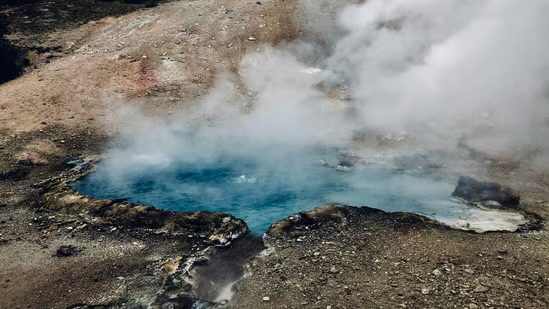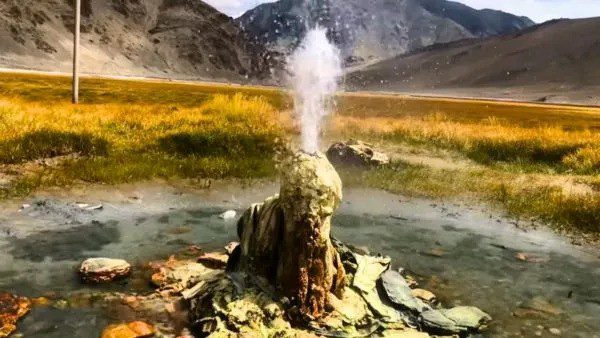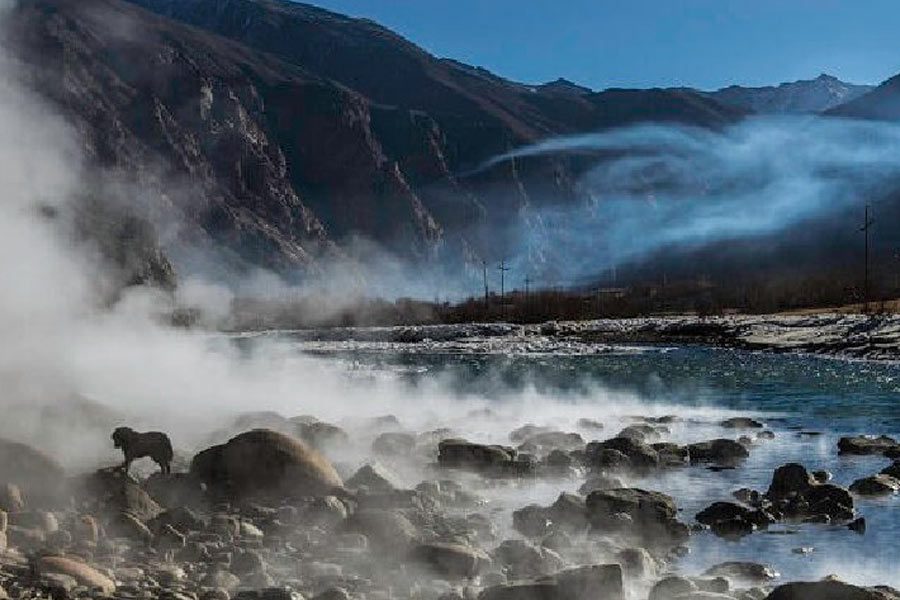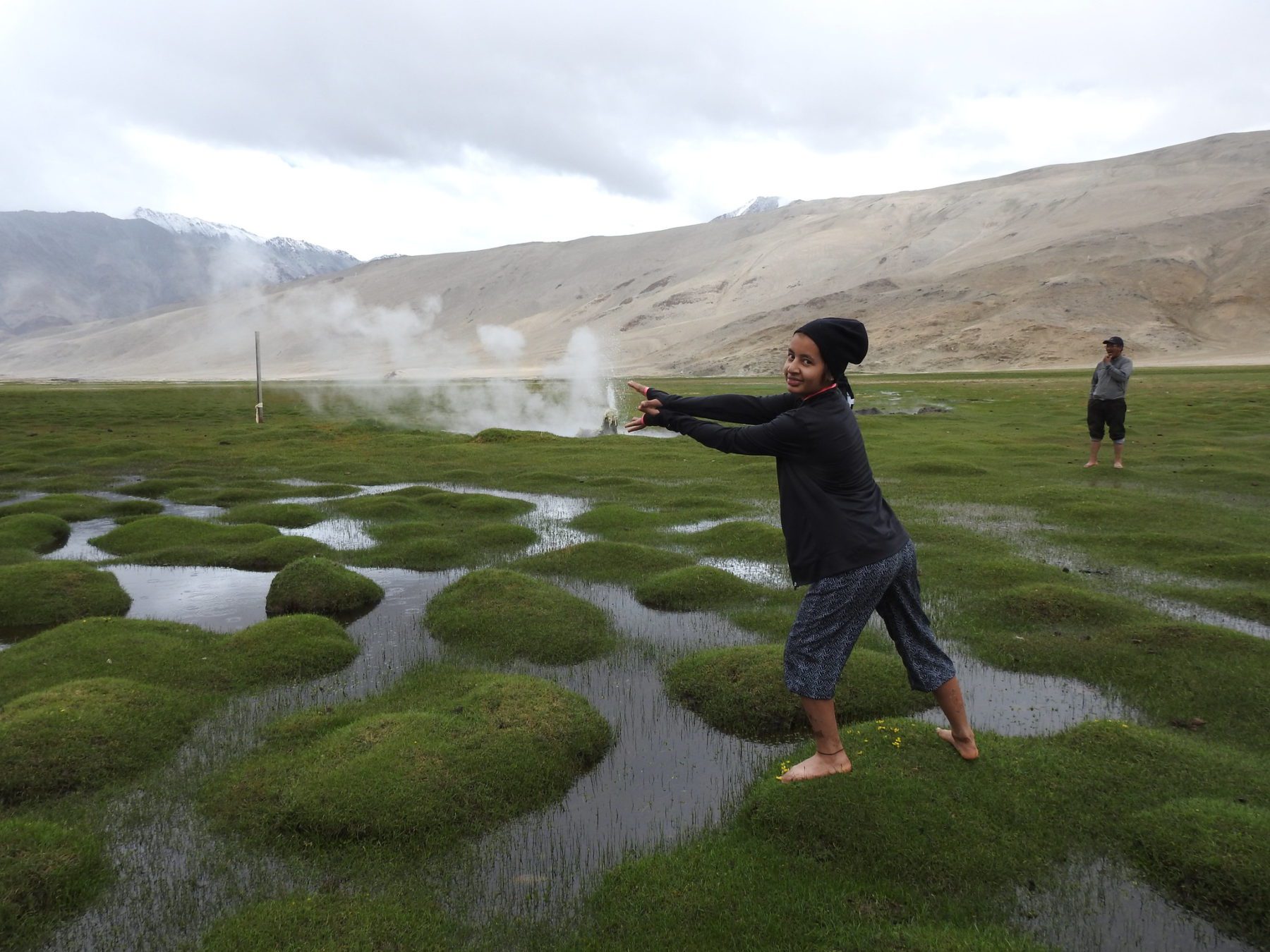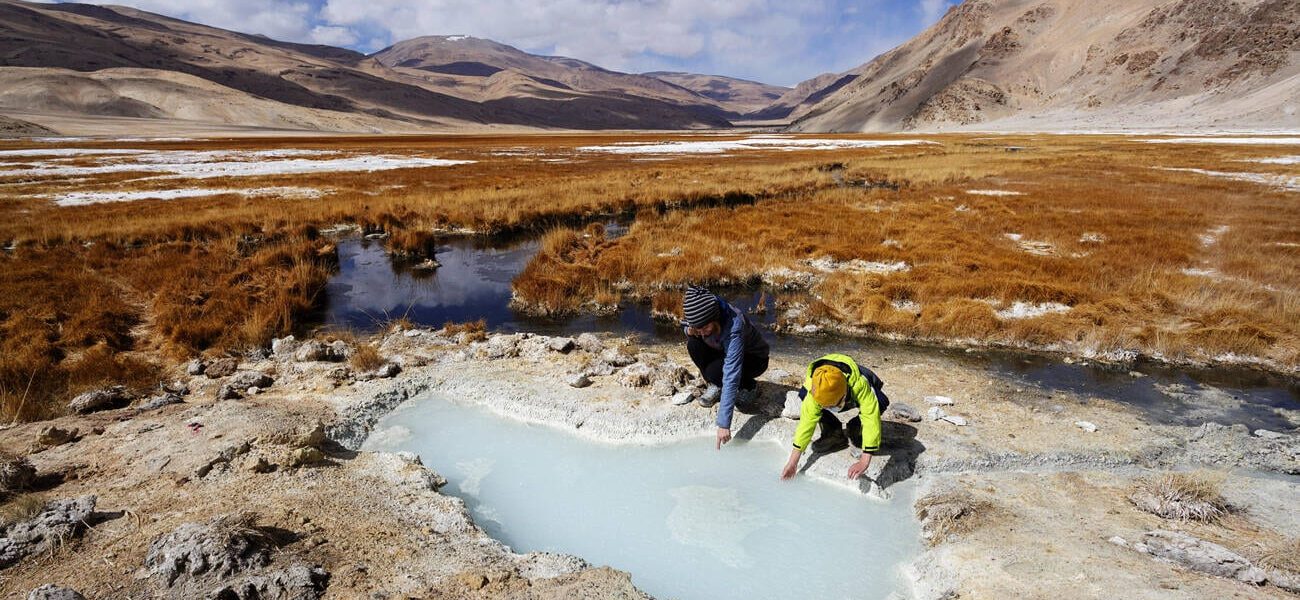Nestled amidst the stark, high-altitude landscapes of Ladakh, India, are hidden natural wonders: hot springs that offer warmth and relaxation against the backdrop of Ladakh’s frigid mountain air. This guide reveals the best hidden hot springs in Ladakh, detailing their health benefits, cultural significance, and tips for making the most of your visit. Whether you’re an adventurer or seeking tranquility, Ladakh’s hot springs offer an unparalleled escape.
Why Ladakh’s Hidden Hot Springs Are a Must-Visit
The Unique Geography of Ladakh’s Hot Springs
Ladakh’s hot springs, or thermal springs, owe their existence to geothermal activity beneath the Earth’s crust. Hot water is heated by geothermal energy deep underground, creating natural hot pools that emerge in Ladakh’s valleys and mountains. These springs are not only soothing but often mineral-rich, offering health benefits that locals have embraced for centuries.
“The hot springs in Ladakh feel like a miracle in such a cold place. They are nature’s gift to us!”
— Amara Khan, Travel Blogger, Middle East
Therapeutic Benefits of Ladakh’s Thermal Springs
The mineral composition of Ladakh’s natural hot springs offers a range of health benefits. Bathing in these waters has been shown to relieve sore muscles, improve circulation, and promote relaxation. Hot springs such as those at Panamik and Chumathang are particularly rich in sulfur and other minerals that can benefit those with arthritis, skin conditions, and respiratory issues.
“After trekking through the cold, the Chumathang hot springs completely rejuvenated me. I felt refreshed and ready to take on more of Ladakh.”
— Miguel Lopez, Adventure Photographer, Spain
Why Winter is the Best Time to Visit Hot Springs in Ladakh
Ladakh’s high-altitude regions experience chilly weather year-round, but visiting hot springs in winter creates a beautiful contrast. The cold air and snowy landscapes make dipping into warm, soothing waters a uniquely magical experience. Winter is also the best time to avoid crowds, allowing visitors to immerse themselves in solitude.
“I visited Ladakh’s hot springs in January, and it was amazing! The cold all around made the hot spring feel like a paradise.”
— Priya Patel, Marketing Professional, India

Top Hidden Hot Springs to Explore in Ladakh
Chumathang Hot Springs
Located in the Indus Valley, Chumathang is a well-known hot spring location among Ladakh’s locals but remains relatively undiscovered by tourists. Chumathang Hot Springs are easily accessible from Leh, approximately 140 kilometers away. The geothermal waters of Chumathang emerge directly from the ground near the Indus River and are hot enough to feel therapeutic but not scalding.
| Details |
Information |
| Location |
Indus Valley, near Chumathang Village |
| Distance from Leh |
~140 km |
| Temperature |
Around 60°C |
| Best Time to Visit |
Winter (November to February) |
“Chumathang’s hot springs are incredible, surrounded by mountains and the calm Indus River. So relaxing!”
— David Green, Geologist, United Kingdom
Puga Valley Hot Springs
Puga Valley, known for its high geothermal activity, is one of the most picturesque and remote hot springs in Ladakh. Located about 22 kilometers from Tsokar Lake, these hot springs are renowned for their mineral-rich waters and scenic beauty. Visitors will find stunning sulfur deposits, which create a colorful contrast to the surrounding snow. The Puga Valley Hot Springs provide both warmth and a peaceful retreat.
| Details |
Information |
| Location |
Puga Valley, near Tsokar Lake |
| Distance from Leh |
~250 km |
| Temperature |
Approximately 50-60°C |
| Best Time to Visit |
Winter, when the valley is less crowded |
“The journey to Puga was challenging but so worth it. Sitting in the hot spring with snow all around was surreal.”
— Lars Jensen, Environmental Scientist, Denmark
Panamik Hot Springs in Nubra Valley
Panamik Hot Springs, located in Nubra Valley, is one of the most famous hot springs in Ladakh. Situated at an elevation of 3,183 meters, Panamik is surrounded by snow-capped peaks and is easy to access compared to other springs. These hot springs are known for their therapeutic properties and are often visited by locals and travelers looking for a healing experience.
| Details |
Information |
| Location |
Nubra Valley, near Panamik Village |
| Distance from Leh |
~140 km |
| Temperature |
40-50°C |
| Best Time to Visit |
Year-round, especially winter |
“The Panamik hot springs were a blessing after a long day of trekking in the valley. I felt the warmth seep into my bones!”
— Ayesha Rahman, Yoga Instructor, Bangladesh

Planning Your Trip to Ladakh’s Hidden Hot Springs
Best Time to Visit for Optimal Experience
The winter months from November to February offer the best experience for visiting Ladakh’s hot springs. During this period, the cold temperatures contrast beautifully with the hot waters, making the springs feel even more rejuvenating. Summer visits are possible but can be crowded.
How to Reach Ladakh’s Remote Hot Springs
1. Chumathang Hot Springs: Accessible by road from Leh along the Indus Valley.
2. Puga Valley Hot Springs: Best reached via the Leh-Manali Highway; a four-wheel-drive vehicle is recommended.
3. Panamik Hot Springs: Located in Nubra Valley, these springs are accessible from Leh by road and often included in Nubra Valley tours.
“Prepare for rough terrain and make sure your vehicle is winter-ready when visiting these remote springs in colder months.”
— Raj Malhotra, Mountain Guide, India
Essential Packing Tips for a Winter Hot Spring Experience
– Warm Layers: Thermal wear, insulated jackets, and waterproof gloves are must-haves.
– Towel and Swimwear: Bring quick-drying swimwear and a warm towel for comfort.
– Waterproof Boots: Snow and ice are common near springs, so waterproof footwear is essential.
– First Aid Kit: Always carry essentials in case of altitude sickness.
What to Expect at Ladakh’s Hot Springs
The Surrounding Landscapes: Stunning Mountain Views and Snowy Peaks
Each hot spring is located in a distinct landscape, featuring snow-clad mountains, rocky terrains, and serene rivers. The dramatic scenery makes visiting the hot springs a breathtaking experience.
Wildlife Encounters and Nature Spotting Near Hot Springs
Wildlife is abundant in these secluded areas. You may spot Himalayan blue sheep, foxes, or even rare snow leopards in winter months, adding to the natural allure of these locations.
Local Culture and Traditions Surrounding Ladakh’s Hot Springs
Hot springs in Ladakh are considered healing by locals, and many are visited for their therapeutic properties. Local culture emphasizes respect for these natural sites, and you may even find small shrines or Buddhist symbols near the springs.
“Locals were very helpful in guiding me on how to use the hot springs respectfully. It felt like I was part of something sacred.”
— Emma Barnes, Cultural Enthusiast, Australia

Ladakh’s Hidden Hot Springs as a Unique Adventure and Wellness Retreat
Combining Adventure with Relaxation: Trekking and Hot Springs
Pairing a trek with a hot spring visit is ideal for adventure enthusiasts. Trek through snow-laden paths, then unwind in the hot, mineral-rich waters. Many trekking routes in Ladakh have nearby springs, so plan a route that lets you experience both.
Why Ladakh’s Hot Springs Are Perfect for Wellness Tourism
Ladakh’s hot springs offer a rare wellness experience in high-altitude surroundings. The springs are perfect for those seeking a natural remedy to relax, relieve stress, and escape into nature.
Conclusion
The hidden hot springs of Ladakh provide an unforgettable experience for those seeking warmth, adventure, and tranquility in one of the world’s most beautiful cold deserts. From the healing waters of Chumathang to the secluded beauty of Puga Valley and the famous Panamik springs in Nubra Valley, each offers a unique encounter with nature’s warmth amid Ladakh’s chilly mountains. So, pack your bags, prepare for a rugged yet rewarding journey, and discover Ladakh’s best-kept secrets this winter.

Q&A Section
What is the best time of year to visit Ladakh’s hot springs?
Winter is ideal for experiencing the contrast between the warm waters and the chilly air, making it a unique escape.
Are Ladakh’s hot springs safe to visit in winter?
Yes, but it’s important to be prepared with warm clothing and follow safety precautions for high-altitude environments.
Which hot springs are easiest to reach in Ladakh?
Chumathang and Panamik are among the more accessible hot springs with relatively easy routes.
What are the health benefits of Ladakh’s hot springs?
Ladakh’s mineral-rich springs can aid in relaxation, reduce muscle pain, and improve blood circulation.
Do I need a guide to reach the remote hot springs?
For more secluded springs like Puga Valley, hiring a guide can be helpful, especially in winter.
Are there accommodations near Ladakh’s hot springs?
Basic accommodations are available near some hot springs, but options are limited, especially at the more remote sites.
hidden hot springs of Ladakh
hidden hot springs of Ladakh | The journey through Ladakh mirrors the very essence of unraveling unknown horizons, as its dramatic landscapes and unique cultural identity awaken the deepest sense of wonder and exploration. hidden hot springs of Ladakh delves into this realm where inner peace intertwines with the wild, untouched beauty of Ladakh. From the snow-capped peaks to the serene monasteries, every step in Ladakh is a step toward self-discovery. The mountains, ancient paths, and unspoken mysteries stretch before travelers, offering a meditative experience where each encounter feels both effortless and transformative. Whether it’s trekking across remote valleys or sitting quietly beside a sacred lake, Ladakh invites those who seek a deeper connection to the natural and spiritual world.

hidden hot springs of Ladakh
The monasteries of Ladakh stand as living monuments to the region’s profound spiritual heritage. With origins dating back over a thousand years, these ancient structures are both places of worship and repositories of art, culture, and wisdom. Hemis Monastery, one of the largest in Ladakh, is renowned for its annual festival, featuring colorful mask dances performed by monks. The history of these monasteries reflects Ladakh’s role as a crossroads between India, Tibet, and Central Asia, where religious and cultural influences have intertwined over the centuries.
The Tibetan Buddhist influence is especially evident in the architecture and daily life of the monks. Prayer wheels, intricate murals, and the soft hum of chants fill the air as visitors explore the monastery grounds. Each monastery, from the remote Lamayuru to the awe-inspiring Thiksey, offers a window into the spiritual heart of Ladakh. These centers of meditation, learning, and community life continue to thrive, preserving traditions that have shaped Ladakh for generations.
Why Visit Ladakh for hidden hot springs of Ladakh?
Ladakh is a destination that transcends mere travel. It offers a journey that touches both the outer and inner landscapes, making it a perfect setting for those who seek to unravel their own unknown horizons. The region’s breathtaking scenery—from towering mountain ranges to hidden valleys—provides not just an escape but a space for contemplation and growth. Ladakh’s culture, deeply rooted in Buddhist practices, invites visitors to reflect on their own lives and the world around them.
Ladakh’s people, known for their warmth and hospitality, add to the richness of the experience. Villages like Sumda Chun and the legendary Nubra Valley introduce travelers to a way of life that is intricately connected to nature and spirituality. Staying in local homestays allows for immersive experiences where one can learn about traditional Ladakhi customs, share meals made from local produce, and participate in community rituals.

Beyond its natural beauty, Ladakh offers a unique opportunity to explore oneself. The vastness of the region’s plateaus and the clarity of its skies seem to mirror the vastness of the human spirit. Whether it’s standing atop a mountain pass at 18,000 feet or meditating in a centuries-old monastery, Ladakh helps unravel the unknown horizons within each traveler.
Finding the Best hidden hot springs of Ladakh in Ladakh
Finding the best places in Ladakh to experience “hidden hot springs of Ladakh” involves venturing off the beaten path. Ladakh’s lesser-known treks, such as those leading to secluded monasteries or high-altitude lakes, offer unparalleled opportunities for solitude and reflection. The Markha Valley trek, for instance, takes travelers through verdant valleys, ancient villages, and high-altitude passes, allowing for both physical and spiritual exploration.
Ladakh’s iconic lakes, including Pangong Tso and Tso Moriri, are ideal spots for quiet contemplation. Their still waters reflect the sky, creating a mesmerizing landscape that feels timeless and infinite. Sitting beside these lakes, especially at dawn or dusk, brings an overwhelming sense of peace and connection with nature.

For those interested in Ladakh’s spiritual heritage, exploring monasteries such as Alchi, Phyang, or Diskit can be a transformative experience. These sites are not just places of worship but also centers of art, philosophy, and wisdom. Visiting these monasteries, with their ancient murals and intricate statues, offers insight into Ladakh’s rich cultural tapestry.
Ladakh’s Atmosphere and hidden hot springs of Ladakh
Ladakh’s atmosphere is unlike any other place on Earth. The stark contrasts between the rugged mountains and the serene, tranquil monasteries create an environment that feels both raw and sacred. The traditional decor in Ladakhi homes and religious sites reflects this balance, with mud-brick houses adorned with prayer flags and colorful thangkas (Buddhist paintings) that add warmth and spiritual meaning to the space.

The interiors of Ladakhi homes, often simple and functional, are filled with symbols of devotion. Small shrines dedicated to Buddhist deities are common, and the air is often fragrant with incense. The use of earthy materials, like stone and wood, along with brightly colored textiles, creates an inviting and peaceful space, perfect for relaxation and reflection.
Traditional Ladakhi Cuisine
Traditional Ladakhi cuisine is an integral part of the region’s identity, offering a unique blend of flavors that reflect its harsh climate and remote location. Hearty, warming dishes such as thukpa (noodle soup) and momos (dumplings) provide the sustenance needed to endure Ladakh’s cold temperatures. Skyu, a thick stew made with root vegetables and barley, is another staple of the Ladakhi diet, designed to nourish both body and spirit.

Drinks like butter tea, made with yak butter and salt, are a must-try for anyone visiting Ladakh. This rich, savory drink is not only warming but also hydrating, making it essential for those venturing into the high-altitude regions of Ladakh. Chang, a local barley beer, is often enjoyed during festivals and community gatherings, adding a sense of joy and camaraderie to any occasion.
Live Cultural hidden hot springs of Ladakh in Ladakh
Ladakh is home to a vibrant cultural scene, with festivals and live performances held throughout the year. The Hemis Festival, which celebrates the birth of Guru Padmasambhava, is one of the largest and most famous events in the region. Monks dressed in elaborate costumes perform cham dances, which depict the triumph of good over evil. The energy of the festival, with its bright colors, rhythmic music, and elaborate rituals, draws visitors from around the world.
Other local festivals, such as the Losar (New Year) and Ladakh Festival, provide visitors with the chance to witness traditional dance, music, and crafts that have been passed down through generations. These events are more than just entertainment; they are a celebration of Ladakh’s rich cultural heritage and its deep connection to the spiritual world.
Trekking and Outdoor Activities hidden hot springs of Ladakh
Ladakh is a trekker’s paradise, offering some of the most stunning and challenging routes in the world. From the famous hidden hot springs of Ladakh, which follows the frozen Zanskar River, to lesser-known routes like the Sham Valley or Nubra Valley treks, Ladakh’s landscape offers endless possibilities for adventure and discovery. The high-altitude passes, such as Khardung La and Chang La, offer breathtaking views of snow-capped peaks and sprawling valleys.

Wildlife enthusiasts will also find hidden hot springs of Ladakh to be a haven for rare species such as the snow leopard, Himalayan blue sheep, and the Tibetan wild ass. Winter expeditions to spot the elusive snow leopard in the Hemis National Park are gaining popularity among wildlife photographers and conservationists alike.
The Importance of Preserving Ladakh’s hidden hot springs of Ladakh
Ladakh’s rich cultural and environmental hidden hot springs of Ladakh is under increasing threat from climate change and mass tourism. Preserving this unique region requires careful attention to sustainable tourism practices. Choosing eco-friendly accommodations, supporting local businesses, and participating in community-led conservation efforts are just a few ways that visitors can contribute to the preservation of Ladakh’s natural and cultural heritage.
Ladakh’s people have a long history of living in harmony with their environment, practicing sustainable agriculture, and maintaining a deep spiritual connection to the land. Visitors are encouraged to follow the same principles, leaving no trace and respecting the fragile ecosystems that make Ladakh so special.
Etiquette and Tips for Visiting hidden hot springs of Ladakh
Before visiting Ladakh, it’s essential to understand and respect the region’s customs and traditions. As a deeply spiritual place, Ladakh requires visitors to dress modestly, especially when visiting monasteries or attending religious ceremonies. Always ask for permission before taking photographs inside monasteries or of local people.
Medical hidden hot springs of Ladakh
Spa trail hidden hot springs of Ladakh
hidden hot springs of Ladakh

When hidden hot springs of Ladakh, remember to stay on designated paths to avoid damaging fragile ecosystems. Tipping is appreciated but not expected in most settings, and it’s important to carry cash, as many remote areas do not accept credit cards. Lastly, be mindful of altitude sickness and take the necessary precautions when traveling to higher elevations.
Conclusion: Enjoying hidden hot springs of Ladakh in Ladakh
Ladakh is a place where the physical and spiritual worlds converge, offering travelers a journey unlike any other. Whether you’re trekking across high-altitude deserts, exploring ancient monasteries, or simply sitting in quiet reflection by a mountain lake, Ladakh invites you to unravel your own unknown horizons. By respecting the region’s traditions and practicing sustainable tourism, you help ensure that Ladakh’s beauty and cultural richness will be preserved for future generations to explore and enjoy.
